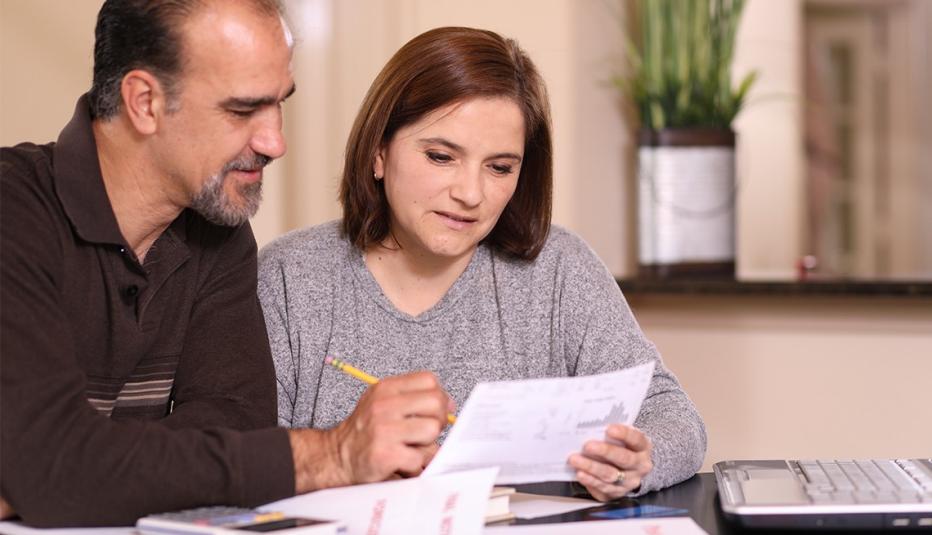AARP Hearing Center
In an effort to slow cost growth and improve health care quality, Medicare has in recent years developed a number of new ways to pay for and provide health care, and has been testing them through pilot programs in facilities and communities across the country. These test programs give heath care providers both financial incentives and new flexibility to change how they deliver care, with the goal of improving coordination and quality, reducing unnecessary or duplicative services, and focusing on outcomes important to patients and their families.


This report highlights and describes in detail seven innovative programs that represent a variety of approaches and span a wide range of Medicare services. In selecting these promising innovations, the authors examined the evidence of their effects on cost and quality-of-care. They also considered other implications, including effects on individuals’ access to care, and on patients’ and family caregivers’ experiences. The innovations are sorted into three groups based on evidence for their potential benefits.
In addition to describing these seven innovations, the report includes a discussion of each program’s results: its scope and scale, and its effects so far on cost and quality. The discussions review available evidence from Medicare as well as other government agencies and outside experts, covering specific dollar amount cost savings as well as quality measures, (e.g., hospitalizations, readmissions, emergency department visits), and other findings from patients and clinicians when available. The discussions consider potential benefits to consumers and to Medicare were any of these programs to be scaled up; they also identify potential negative effects and areas for potential improvement.
Transformation in health care takes time. However, with careful evaluation, development, and expansion of successful models, innovative Medicare payment and delivery models, like those reviewed here, have the potential to help control Medicare spending while improving the quality of care.
The seven innovations sorted into three groups based on evidence for potential benefits are as follows:
Group One: Innovations with demonstrated evidence of success that could yield broad benefits to both consumers and the Medicare program if expanded.
Innovation #1 - Independence at Home: Comprehensive In-Home Primary Care for People with High Needs
Independence at Home is testing whether providing comprehensive primary care services at home for individuals with very high health care needs leads to better health outcomes, improved patient and caregiver satisfaction, and lower Medicare costs. In theory, home-based care allows clinicians to provide coordinated, comprehensive care that reduces the risk for costly preventable hospital stays, readmissions, or emergency department visits.
Innovation #2 - Community-based Care Transitions Program: Partnerships between Community-Based Organizations and Hospitals to Improve Post-Hospital Transitions
The Affordable Care Act (ACA) mandated this program with the goal of reducing hospital readmissions, which are often caused by factors beyond the walls of the hospital (e.g., medication errors or not receiving sufficient assistance with activities of daily living). This initiative, now completed, relied heavily on community-based organizations with experience connecting patients and family caregivers to community support services (e.g., Meals on Wheels, transportation). Most of the 101 community-based organizations that participated were Area Agencies on Aging and their affiliated Aging and Disability Resource Centers.
Innovation #3 - Competitive Bidding for Durable Medical Equipment
Historically, traditional Medicare has paid durable medical equipment (DME) suppliers using a fee schedule based on updated average industry charges. In 2011, CMS implemented competitive bidding in certain geographic areas for many DME items, such as wheelchairs and hospital beds. Bids are evaluated based on the supplier’s eligibility and financial stability, as well as the bid price. The program was temporarily suspended in 2019 while the Medicare agency reviews the bidding process.
Innovation #4 - Payment Models for Accountable Care Organizations
Since 2012, Medicare has been testing new ways to pay groups of health care providers that voluntarily join together to form an accountable care organization (ACO). The idea is that when providers are collectively responsible for meeting cost and quality targets, they are more likely to collaborate to reduce unnecessary tests, duplicative services, and medical errors. In “one-sided risk” models, ACOs receive a portion of any savings they generate. In “two-sided risk” models, in addition to sharing in any savings, ACO providers must absorb some of the costs if their spending exceeds a certain amount.
Group Two: Innovations with early, but limited evidence of success for consumers and, in some cases, savings for Medicare that could also produce greater benefits if expanded.
Innovation #5 - New Payment Codes for Transitional Care Management, Chronic Care Management, and Other Services that Support Coordinated Care
Over time, Medicare has added several new payment codes to the fee schedule that physicians, nurse practitioners, and other clinicians use to bill Medicare, to encourage them to provide various types of care management that may benefit patients but are currently underprovided. One example is Transitional Care Management, in which a clinician takes responsibility for the patient’s care for the 30-day period following discharge from a facility. In another example, Chronic Care Management, clinicians receive a monthly payment for non-face-to-face care management activities, such as developing a comprehensive plan of care and communicating with other providers involved in a patient’s care. More recently, other codes have been introduced: advanced care planning, integration of behavioral health, cognitive assessment and care planning services, remote patient monitoring, and additional electronic-based services including virtual patient check-ins and chronic care remote physiologic monitoring.
Innovation #6 - Comprehensive Primary Care
In the Comprehensive Primary Care Plus (CPC+) initiative, a key feature is that Medicare is partnering with other payers (such as private insurance plans and state Medicaid programs) to give primary care practices financial support and incentives to transform their practices to better meet patients’ needs. For example, practices could use the enhanced financial support to offer round-the-clock phone access to a medical professional, or to hire staff to help patients arrange services such as transportation or physical therapy. The support comes in monthly, per-patient amounts from Medicare and the partnering payers.
Group Three: One innovation that merits cautious optimism but requires more thorough evaluation in order to determine its potential.
Innovation #7 - “Bundled” Payment
Instead of paying for each service involved in a care episode such as a surgery, in these initiatives Medicare sets a single, comprehensive benchmark amount that covers multiple services within a specific type of episode. The idea is that bundled payments give providers a financial incentive to control the resources used in each episode to stay below the benchmark; they may also incur losses if their costs exceed a certain amount. In one initiative, all hospitals in selected geographic areas must participate in bundled payment for certain types of episodes, while hospitals in some other locations have the option of participating. In other bundled payment initiatives, hospitals and other providers may opt to voluntarily participate.






























































